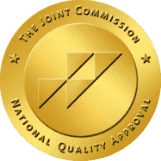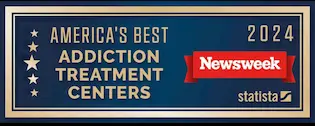Addiction in
Active-Duty Servicemembers
Substance Abuse in the Military and Finding Treatment

Article Contents
How Many Active-Duty Soldiers Have SUD or AUD?
The military is often described as a drinking culture. Marines, Soldiers, Airmen, and Sailors undergo some of the most arduous mental and physical stressors possible. Not all members of the armed forces deploy to active combat, but most must maintain a state of alertness at all times. Mental fatigue is inevitable under even the best combat conditions, combined with depression and alcohol, and it creates a high risk for addiction.
Here are the statistics:
1
- 30% of active-duty members admit to binge drinking
- More than 1 in 3 active-duty members border on alcohol use disorder
- 45% of military suicides are directly attributed to alcohol use
Only 8.6% of service members submit to most surveys. This lack of data means these numbers are much lower than the actual amount. However, the consistency of survey results over the years shows a dangerous trend of substance and alcohol use disorder among active-duty service members and veterans.
Drugs and Alcohol in the Active-Duty Military
Which Substances are Most Abused in the Active-Duty Military?
Far and above, alcohol is the most abused substance among active-duty service members. This popularity is in part due to the drinking culture supported by the military. Alcohol is often used as a reward for bonding, self-medication, and a hobby. Also, military drug tests are random and frequent, which prevents illicit substances’ casual use. Comparatively, alcohol is sold at multiple places on the average military base. Lastly, some branches of the armed forces perceive medical care in a non-combat environment as a sign of weakness. This destructive thinking can cause long-term depression and physical pain, which, in turn, is misguidedly treated with alcohol.
Substance Use Trends in the Active-Duty Military
Substance use in the military was at its lowest in the late ’90s. Roughly 23% of members admitted to illegal drugs. This number spiked to approx 37% at the start of the war in Iraq. The most common non-alcoholic substance abused are pain relievers. Close to 25% of military personnel admitted to misusing pain relievers. Again, most surveys are self-reported. This selective data suggests that a much higher percentage of service members have at least borderline substance use disorder.
The Crisis of Prescription Drug Abuse in the Active-Duty Military
In 2009, 3.8 million pain relief prescriptions were written by doctors for military personnel. There’s concern about pain relievers being so commonly prescribed to military personnel returning from war, experiencing transition failures, and general injuries associated with prolonged physical activity. This issue is most prevalent in the Army, the largest military branch.
The Rise of Illegal Drug Use During Deployment
Deployment has a proven trend to foster an addiction to nicotine and alcohol. Deployment is also responsible for a higher rate of relapse in service members with a history of substance use. Mental stressors play a significant role in the rise of illegal drug use during deployments. To be clear, not all deployed military members engage in combat. Many aren’t near combat compared to their more frontline counterparts. Regardless, many combat jobs in the military result in injury, often ending in a pain relief prescription. Deployments also cause emotional strain with family members back home due to a lack of consistent communication.
Because of this and other reasons, family therapy and extended vacation is offered to returning military personnel
Treatment for Active Military with Substance Use Disorders
Active-duty servicemembers do have options for treating and preventing drug addiction. However, they also have a significant barrier standing between them and treatment.
Zero-Tolerance Policy Preventing Treatment
The zero-tolerance policy first came around shortly after the end of the Vietnam war. During Vietnam, many troops engaged in illegal substances such as marijuana and opium. This connection became well known to the public leading to the department of defense imposing stricter monitoring of drugs.
The punishment for using illegal drugs or failing a military drug test is severe. A service member can lose rank, pay, vacation, receive extra duty, be sentenced to the brig, and be publicly humiliated for engaging in illicit drug use. This punishment makes seeking help for addiction less than appealing. The zero-tolerance policy prevents countless service members from seeking recovery.
Drug Rehab During Active-Duty
Although punishment for drug use is all but a guarantee, the military does offer programs for active-duty members dealing with addiction. Many programs run through Tricare – the leading military healthcare provider. These programs can include therapy, medication, and specialized healthcare plans.
Programs
Tricare offers a variety of drug rehabilitation programs, including but not limited to:
- Inpatient
- Outpatient
- Detox
- Mental health services
- Opioid treatments
- Residential substance use disorder treatment
Additionally, military battalions or religious services may offer sponsored drug treatments as well.
Returning Home with a Substance Use Disorder
Returning veterans have a higher rate of Substance Use Disorders (SUDs), Post Traumatic Stress Disorder (PTSD), and serious brain injuries. These co-occurring conditions complicate treatment options. 1 out of 3 veterans with SUDS have PTSD. 1 in 10 veterans have alcohol use disorder. These connected conditions can cause a cycle that leads to veteran suicides.
Social Reintegration
Returning veterans have difficulty communicating on any meaningful level with civilian counterparts. This communication barrier can make finding work outside of the military difficult, especially for veterans with more combat-oriented jobs such as infantry, explosives, etc.
Domestic Violence
Veterans, especially male veterans, commit domestic violence at a higher rate than non-veterans. This high rate is often a combination of SUD, PTSD, and a lack of access to coping tools.
2
Homelessness
Inevitably, the inability to function in society will lead to homelessness. Additionally, veterans who have little access to mental health services or medical treatment have a higher homelessness rate.
Incarceration
Some veterans enter the judicial system, often due to the inability to build healthy coping mechanisms or gain control of a substance disorder.
Suicide
20 to 22 veterans commit Suicide per day due to this cycle of addiction and neglect.
Combat PTSD and Addiction
The Link Between Combat and PTSD
Trauma, any trauma, scars the brain. Combat in a war zone is practically guaranteed to cause mental and physical changes. Furthermore, combat veterans experience deeper lows of depression and higher levels of pain when compared to their non-combat vet counterparts.
The Link Between PTSD and Addiction
PTSD leads to depression, emotional instability, and anti-social behavior. Any of these individual factors can cause addiction. Additionally, not all veterans are eligible to receive treatment. Roughly 16% of veterans are dishonorably discharged. This label permanently bars them from using military benefits. This barrier makes it even more challenging to receive mental health services.
EMDR for PTSD and Addiction
EMDR or Eye Movement Desensitization and Reprocessing is a form of mental health service to lessen the effects of PTSD and other mental illnesses. EMDR is conducted by encouraging the client to speak about their trauma in brief spurts while engaging a specific sense. Most commonly, they’ll follow a light, pen, or hand movement of the therapist. A simple yet effective technique that allows the brain to forge new neural connections. In time, this creates new automatic responses and provides greater control of triggers.
Addiction Treatment Facilities
Treatment for substance use can be split into the following categories.
Inpatient
Inpatient treatment refers to 24/7 medical and psychiatric care to reduce the effects of withdrawal and provide short-term stability during detox.
Outpatient
Outpatient often involves a long-term treatment plan that is adhered to on your own time. The client checks in with a provider regularly for updates, check-ups, and support. Outpatient also involves various forms of personal and family therapy.
Residential
Like that of a sober living house, residential treatment is a mix of inpatient and outpatient care. It provides stability, a sense of community, and a routine. Residential options are an excellent option for more severe cases of substance use disorder.
The military is tough. Addiction is tougher. If you’re a veteran experiencing anxiety, sleeping issues, substance use disorder, or are having difficulty connecting with people, seek help. No one does it alone. There are support groups for veterans that veterans run. There’s more to your story. The military isn’t the end of you, don’t drop your pack just yet.
Resources
- https://www.drugabuse.gov/publications/drugfacts/substance-use-military-life
- https://www.ncbi.nlm.nih.gov/pmc/articles/PMC6242277/
More About Addiction
More About Addiction





